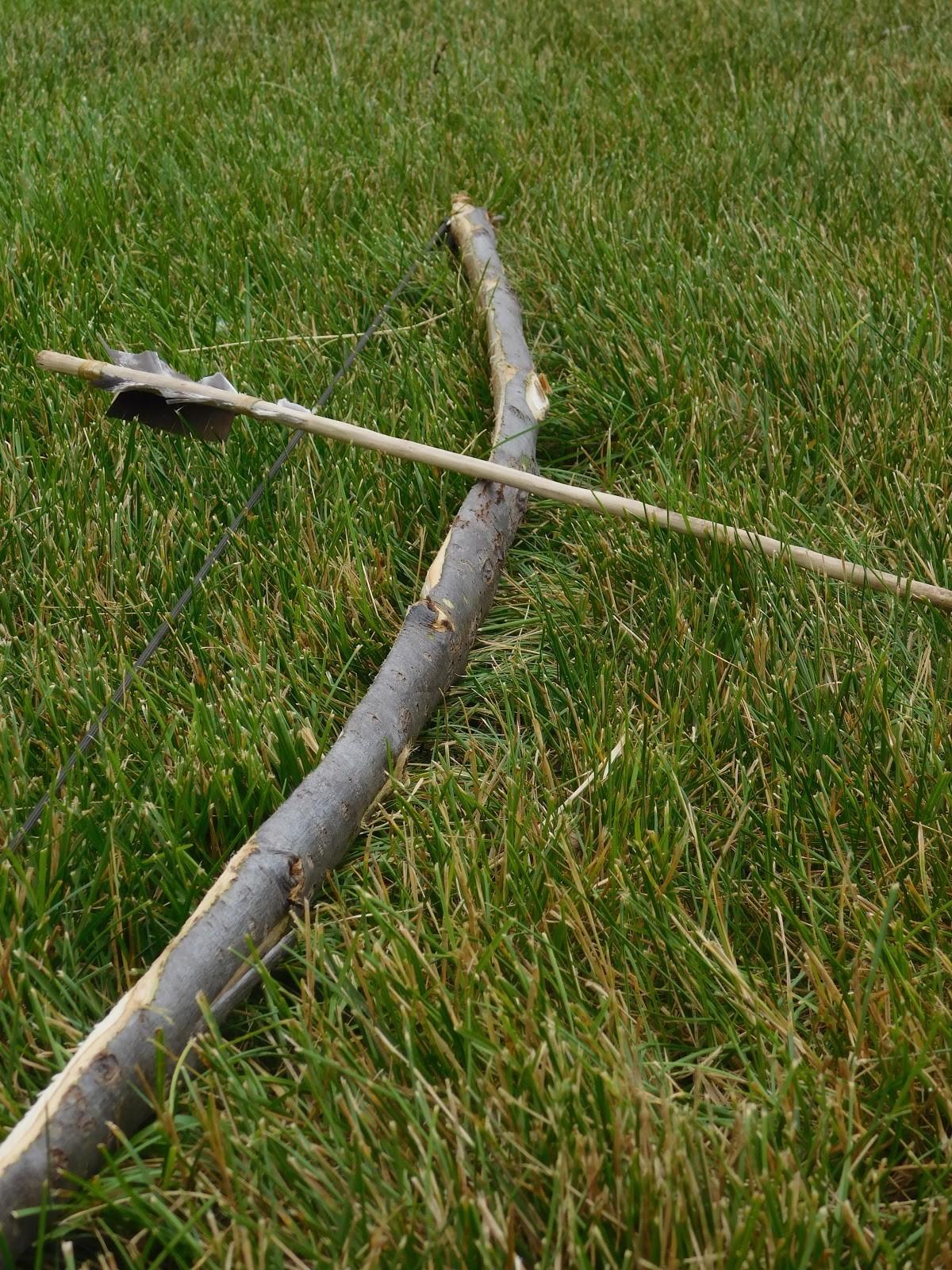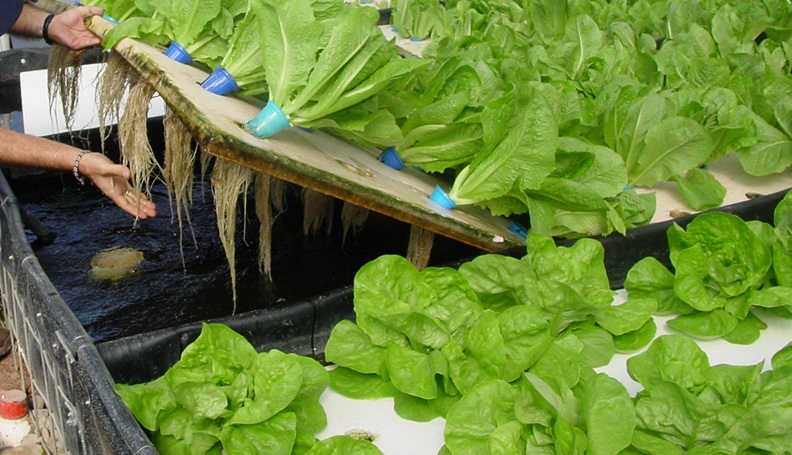Behind finding fresh water, finding food is one of the biggest concerns in a survival situation. The easiest way to feed yourself for short-term situations is to learn edible plants, but at some point you need meat.
When you start discussing tools for hunting, the bow and arrow inevitably enter the conversation. Learning to make a capable bow, though, is no easy task. Bows made by bowyers today are works of art just as much as they are hunting tools. Learning the entire process takes years of practice and attention to detail. If carefully crafted and cared for, a good bow can last for years and years.
The problem is that properly curing a piece of wood (stave) for a bow takes months or years if done the traditional way. If wood is not properly dried, it will break much sooner and you will have to start over. If you find yourself in a situation where you need a bow and arrow, but don’t have years to dry a stave, you’ll need to make a “quickie” survival bow. Quickies are bows that are completed within a few hours of harvesting the wood. These bows are not designed for long-term use, as they will most certainly break at some point in the near future. However, these bows can absolutely serve for short periods of time until you can properly cure a stave.
For those interested in learning how to make a survival bow, here are the three steps you need to follow.
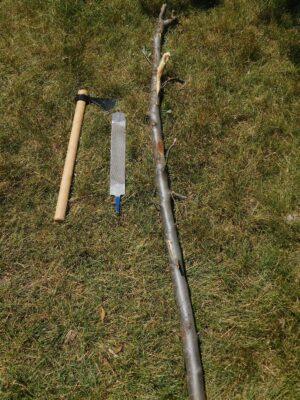
1. Selecting your wood
Good woods for bow-making are yew, ash, Osage orange, oak, bamboo and mulberry. You may, however, find yourself in a situation where none of these woods are highly prevalent. As I set out to make myself a quickie bow I found myself in that exact predicament. In the Great Plains where I live, trees are scarce, and trying to find a good tree for making a bow can feel like looking for hen’s teeth. With that being the case, I decided to select a much-despised tree of the plains — the Russian olive. Although these invasive trees are everywhere, they have not earned a reputation as a standout bow material. Beggars can’t be choosers, I suppose.
When selecting any piece of wood, a piece that is taller than the shooter, straight-grained, and free of many knots is ideal. Good woods have the ability to withstand forces of tension on the back (facing away from the archer) and compression on the belly (facing the archer). Once again, the ideal piece of wood may not always be available in a survival situation, so do your best to find a piece that most closely fits the bill. I was able to find a Russian olive branch about the thickness of my arm — and fairly straight. It also had no major projecting branches. Since it was so prevalent and the piece looked good, I decided to give it a go.
2. Roughing it out
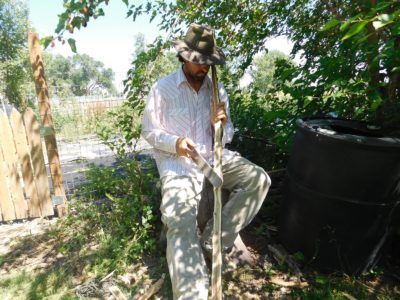
Once you have your piece of wood selected, it is time to start roughing out the bow. Use a tomahawk, hatchet or knife to remove large bits of wood and create a rough outline of your bow. Be careful not to remove too much wood in this process. You can always take more wood off, but you can’t add more once it is gone. On my Russian olive bow I left the back of the bow completely untouched and it worked well enough. Bowyers will tell you this is incorrect, and they are right; this is not the correct way to make a bow you want to last for a long time. However, we are discussing survival bows and are looking to make an efficient hunting tool as quickly as possible. With the rough shape of the bow carved out, you can move onto the next step in the process.
3. Tillering
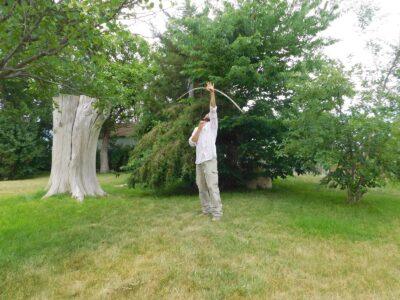
The next step to make a quickie survival bow is to tiller the bow. Tillering is the process of getting the bow to bend in an even arc when drawn. You can continue to work with your cutting tool, but a file is ideal for the job. If you have a file available, it is worth using. Start by bending the bow and seeing where it is stiff and where it bends easily. In the areas the bow bends stiffly, begin to remove a small bit of material with your file. A good rule is to spend more time scrutinizing your bow than you do working on it. This will help you avoid removing too much material and ending up with a bow that is too light and incapable of doing its job. Continue to remove material and check the arc of the bow until you are pleased with it. Once again, spend as much time tillering as you find acceptable for your situation. When you are pleased with the tiller of the bow, it now can be strung and ready for use.
I was able to construct my quickie survival bow in the matter of a few hours; depending on your situation you can spend more or less time on the process. If your survival situation were to be a long-term affair, you would be wise to begin drying a stave while you make your first quickie bow. You could essentially use quickie bows in the time it took your stave to dry and then construct a long-term hunting bow for yourself. Regular hunting bows are made in much of the same fashion, with attention to detail being a big key. The kind of bow you create all depends on your particular situation. However, should you decide to proceed with a quickie bow you can rest easy knowing your new survival bow can help procure some life-saving meat. Add this knowledge to your list of bushcraft skills, and you will immediately increase your ability to survive and thrive in most any situation.


